It was the fall of 1929. Though the beginning of September saw a dramatic decline in stock prices, no one could have anticipated the consequences of such a drop. But by October 29, or "Black Tuesday," the U.S. stock market had completely crashed.
What followed was an economic crisis unlike any that had come before—one that reverberated across the globe and throughout the 1930s. Money was tight, whether you were rich or poor. International trade dropped, while unemployment rates soared to frightening heights.
And yet, despite the hardship, people continued to lead their lives and fight the good fight. The following books about the Great Depression show us that some people even became heroes, from Plennie Wingo's record-breaking travels to a grandfather's secret acts of kindness. Others faced additional obstacles, such as home-destroying dust storms, while an entire country underwent a major overhaul of its culinary tradition.
Whatever the case, the books below tell fascinating stories of courage, change, and corruption from 1929 to 1939, as the world fell into—and climbed out of—the Great Depression.

The Great Depression: A Diary
This firsthand account of the Great Depression was written by Benjamin Roth, a lawyer from Youngstown, Ohio. It outlines the state of affairs that he and many other middle-class Americans faced following the crash of the stock market.
Business was tanking and people were spending less money on many services, lawyers included. Roth records not only his own changing financial circumstances, but his personal take on political unrest, mass unemployment, and more in this compelling account.

A Rabble of Dead Money
This book delves into the factors that led to the Great Crash of 1929. The United States was poised to become a superpower at the time, but the stock market crash was a stumbling block that halted national and economic growth for over a decade.
Author Charles Morris examines the effect of the crash on the world, as well as the global factors that contributed to the rise and fall of America’s economy during this period.
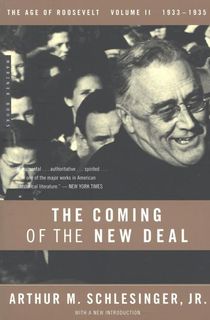
The Coming of the New Deal
Presidents are closely watched during their first 100 days in office. Which policies they enact, what they keep or discard from the previous administration, their ability to lift or lower the morale of the nation, are all judged. When Franklin D. Roosevelt became president in 1933, he faced extra scrutiny because he was dealing with a nation in crisis.
Despite this, he managed to boost the morale of the nation within his first 100 days, as well as set the wheels of the New Deal in motion, helping to draw the nation out of the Great Depression. This book follows not only Roosevelt’s first 100 days, but his first two years in office.
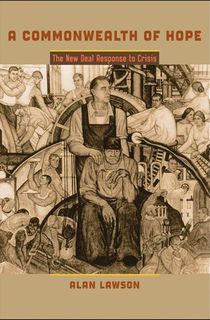
A Commonwealth of Hope
This book is a meticulous study of not only the Great Depression, but of the legislation designed to pull the United States out of it. Lawson examines the circumstances surrounding the ideation, creation, and implementation of the New Deal.
Using accounts from the era—newspapers and periodicals, as well as records from the Roosevelt administration—he breaks down the evolution of the New Deal’s structure.

The Man Who Walked Backward
With almost everyone struggling to stay afloat, many Americans cooked up money-making schemes and sought out fame. Plennie Wingo of Abilene, Texas, was one such individual—though his path to glory (and his means of getting there) was a bit unusual: In April of 1931, Plennie donned a pair of steel-heeled shoes, made postcards of himself, and began a backwards trek around the world.
But in his quest to find sponsorships and a bankable name, this 36-year-old adventurer found so much more. From an unfortunate run-in with the law to the surprising kindnesses of strangers, Plennie’s journey across Steinbeck’s America—then to Hitler’s Germany and beyond—was full of memorable experiences that paint a unique portrait of the Great Depression.
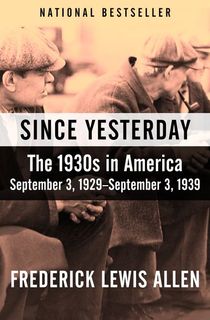
Since Yesterday
The Great Depression held the U.S. in a firm grip from 1929 to 1939, all but depleting morale. The 1933 election of President Frank D. Roosevelt restored some stability, though full recovery still sat on the distant horizon—and with plenty of speed bumps blocking the pathway there.
While the decade was tumultuous, it also ushered in new traditions, pastimes, and inventions that forever changed American life. Since Yesterday brings readers into this transformative 10-year period, chronicling the nation's slow emergence from the shadows of its greatest economic downturn.
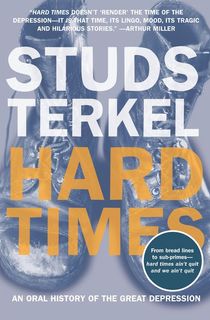
Hard Times
With Hard Times, Studs Terkel has captured an entire generation—using words straight from the mouths of Great Depression survivors. Here, you'll find the testimonies of everyone from hard-scrabble Okie farmers to major political players like C. Wright Patman and Hamilton Fish.
The result is a rich and varied tapestry of human experience that is both an oral record of the 1930s and a tribute to the resilience of the American spirit.

Once in Golconda
Most stories of the Great Depression begin with the crash of 1929, but John Brooks’s “True Drama of Wall Street” goes back to the bull markets of the 1920s that preceded the crash. In the period between the World Wars, the American stock market seemed too big to fail, and investors and bankers were on top of the world.
How did so much prosperity turn so quickly to disaster? Brooks tells the story of Wall Street’s dizzying highs and tragic lows, using as his jumping-off point the legendary city of Golconda in India. According to the stories, anyone who passed through Golconda attained fantastic riches—at least, until the city ran out of wealth.
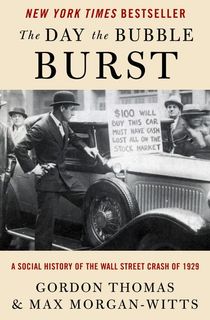
The Day the Bubble Burst
In the 1920s, Americans approached finance, business, and government policy with blind optimism. Nothing, as far as they were concerned, could ever go wrong. But the events of October 29, 1929, proved that these opinions were delusions, as the "untouchable" U.S. stock market crashed—and took the world economy with it.
This New York Times bestseller profiles the powerful men behind the scenes—and the everyday citizens who suffered the consequences of their actions—to offer an engaging history of the Great Depression that doesn't feel like it was just pulled from a dusty shelf.

Lords of Finance
Despite popular belief, the Great Depression can be traced back to individuals—four influential bankers, to be exact. This quartet included the Bank of England’s Montagu Norman, the French Émile Moreau, Hjalmar Schacht of the Reichsbank, and Benjamin Strong from the Federal Reserve Bank of New York.
In the devastating aftermath of World War I, these men prioritized restoring economic stability—and believed their success lay in reintroducing the gold standard. Finance expert Liaquat Ahamed's Pulitzer Prize-winning analysis examines how this decision led to the 1929 crash (and the catastrophe that ensued), which also bears disturbing parallels to our modern-day economic crises.

The Worst Hard Time
As Americans buckled under the weight of the Great Depression, those on the Western High Plains were struck by another disaster: the Dust Bowl. Far more severe than any storm that had come before, these "black blizzards" were reminiscent of a biblical plague—killing both crops and people.
In his National Book Award-winning book, Timothy Egan reveals the factors behind their intensity and frequency—likely a combination of the reckless farming practices and the wider economic collapse. But at its heart, The Worst Hard Time is an intimate portrayal of the men and women who saw their world fall apart and lived to tell the tale.

A Secret Gift
In 1933, the struggling residents of Canton, Ohio saw a peculiar ad in the newspaper: Would families write to Mr. B. Virdot about their experiences during the Great Depression in exchange for $10? In reality, Virdot's true name was Sam Stone, and he simply wanted to provide much-needed relief for the upcoming Christmas season.
75 years later, Stone's grandson discovered the locals' responses in a suitcase, whereupon he set out to learn the stories behind them. His search not only unveiled the effects of his grandpa’s secret generosity, but also of the man's secretly troubled youth. The entire investigation is recounted in this book—a unique and moving entry in the canon of Great Depression nonfiction.

Little Heathens
Unlike so many accounts of the Great Depression, Little Heathens is one of joy, excitement, and family. Author Mildred Armstrong Kalish was just five years old when the economic devastation reached her grandparents' Iowa farm.
While times were certainly difficult—and Kalish is nothing but honest in describing her family’s struggles—such hardship fostered a greater appreciation for life’s simple pleasures.
Whether Kalish is recounting her earnest attempts at digging to China, the rigors of running a farm, or tasting honey straight from the beehive, “the Depression-era challenges and triumphs [have never been] so lovingly recounted” (Bookmarks Magazine).

A Square Meal
Even people's dinners couldn't escape the Great Depression! In Square Meal, Jane Ziegelman and Andrew Coe show readers how the era's political and economic strife trickled down into American kitchens and supermarkets.
Most of the changes stemmed from the government's new role as food providers—a responsibility they didn’t assume with relish, but which ultimately shaped our speed-driven, convenience-obsessed, and science-based diet.
The book also includes recipes and advertisements from the time, rounding out what is a fascinating look at the Great Depression's far-reaching legacy.

Dancing in the Dark
The Great Depression was indeed a dark time in America and around the world, but it was also a time of great cultural inventiveness. As an escape from the harsh realities of life—and sometimes as a way to deal with or even embrace them—Americans turned to everything from vaudeville to the movies, from swing bands to art Deco design.
In Dancing in the Dark, Morris Dickstein, a professor emeritus of English and Theater at CUNY, paints a comprehensive picture of American culture during the dark days of the Great Depression—from musicals and screwball comedies to the shadows of the Dust Bowl.
The Great Depression was a time of anxiety and suffering, but it was also a period of hope and surprising optimism, which Dickstein captures in his wide-ranging cultural survey.
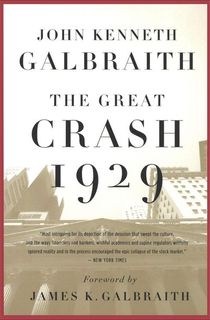
The Great Crash 1929
Never once out of print since it was first published in 1955, John Kenneth Galbraith’s bracing, witty, and erudite record of rampant speculation and the resulting dire financial disaster unfortunately remains as relevant today as it was when he first wrote it.
“Economic writings are seldom notable for their entertainment value,” Atlantic Monthly once said of Galbraith’s classic, “but this book is.” As each new financial bubble is compared to the crash of 1929, Galbraith’s detailed and insightful look at what went wrong, newly updated with an introduction addressing recent financial ups and downs, feels as topical in 2019 as it did upon its debut.

The Match King
Stepping away from big-picture views of the Great Depression, The Match King paints a portrait of the kind of man who helped make it happen, even as he himself was a rare success story in the wake of the crash. So why did Ivar Kreuger commit suicide in 1932?
Frank Partnoy’s book is part biography, part economic treatise on a largely unknown and often misunderstood financial genius who created innovative financial products that wreaked havoc on the markets and prefigured many of the problems that our economy faces today.
As a Swedish immigrant, Kreuger made his fortune by raising capital and lending it to Europe in exchange for matchstick monopolies. The tactic made him rich, but at what cost?
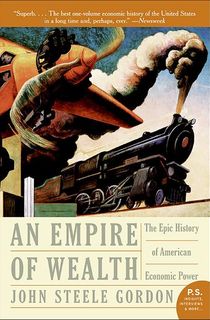
An Empire of Wealth
Commended by Newsweek as “the best one-volume economic history of the United States in a long time and, perhaps, ever,” this illuminating history shows how America became the world’s first economic superpower.
From the recession after the recession at the hands of Andrew Jackson to, of course, the disastrous Great Depression of the 1930s, author John Steele Gordon shows how the country weathered every storm to become the ambitious nation of today.
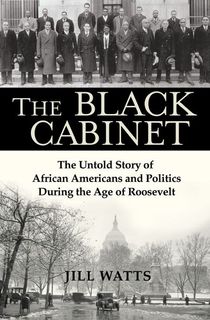
The Black Cabinet
A “unique and enlightening portrait [...] [Jill Watts offers] a groundbreaking reappraisal of an unheralded chapter in the battle for civil rights” (Publishers Weekly, starred review). Watts documents the evolution and fall of what was known in the 1930s and ‘40s as FDR’s Black Cabinet—a key group of African American defectors.
The Black Cabinet narrates an overlooked chapter and group of people in America’s history, through expert research and archival material, who fought post-Reconstruction racial apartheid and ultimately paved the way for the Civil Rights victories of the 1950s and ’60s.
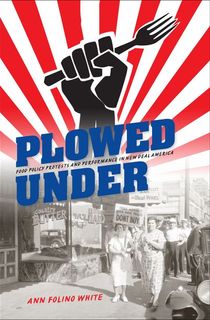
Plowed Under
Under the New Deal Agricultural Adjustment Act during the Great Depression, farmers were instructed to let tons of food go to waste. Many citizens saw the government’s action as senseless, and as such, protests erupted against food and farm policy.
In this study, Ann F. White considers these events as performances, offering “an invaluable contribution to history, theater history, cultural studies, American studies, and other fields” (Journal of American History).

The Forgotten Man
From one of the world’s most esteemed economic commentators comes a new interpretation of the Great Depression. Instead of emphasizing the New Deal, as many authors have, Amy Shlaes turns to the unrecognized stories of individual citizens.
These are, indeed, the people at the heart of the matter, and they lead readers to instead ask why the Great Depression lasted so long, rather than whether Roosevelt ended it with World War II.
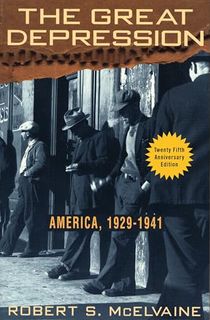
The Great Depression
Considered one of the classic studies of the Great Depression, historian Robert McElvaine's book has continued to be praised by critics for its astute insights 25 years after its publication.
With a look at the economics and politics struggling behind the scenes, to moving, first-hand accounts from Americans, McElvaine offers a complete picture of a crisis that defined a nation’s past, present, and future.
This post is sponsored by Hachette. Thank you for supporting our partners, who make it possible for The Archive to continue publishing the history stories you love.
Featured photo: Dorothea Lange / Wikimedia Commons











